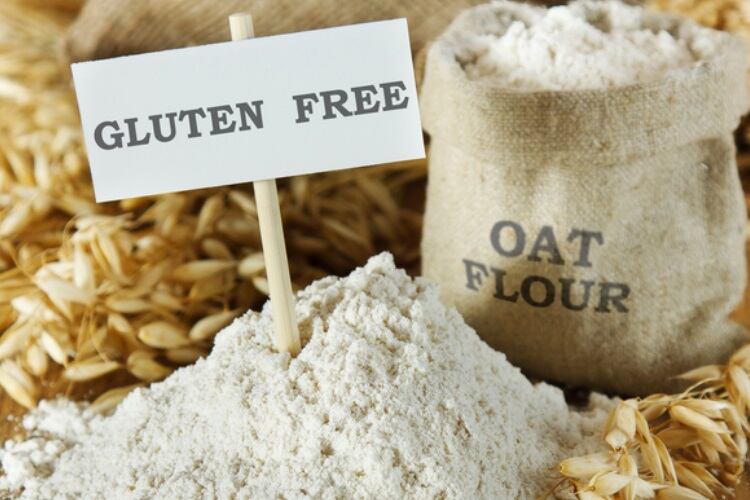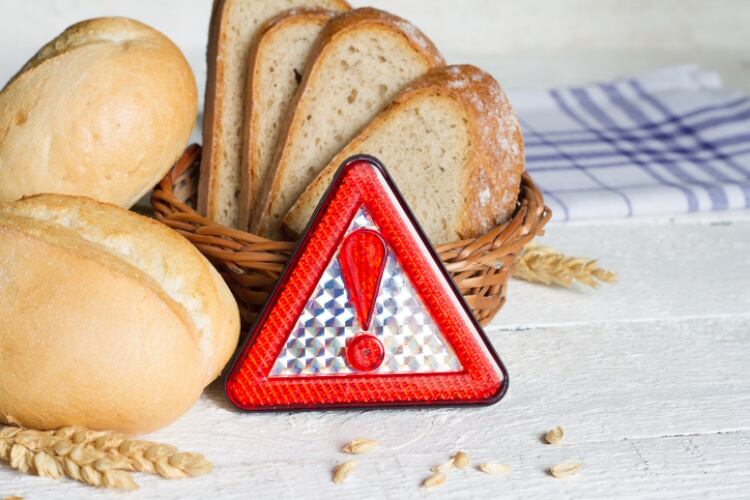Glyphosate, a synthetic herbicide originally patented in 1974 by the Monsanto Company, is known as the active ingredient in Roundup-branded herbicides. According to US Right to Know, Monsanto removed glyphosate-based herbicides from the US consumer market in 2023, but it’s still widely used in commercial agriculture. In 2022, researchers at the National Center for Environmental Health, Centers for Disease Control and Prevention detected glyphosate in the urine of 81% of Americans over six years of age.
“Moms Across America has a vast and dedicated network of mothers who are dealing with physical and mental health issues in their families. Many of our mothers are also challenged with their own health issues,” said Moms Across America director Zen Honeycutt.
“Some of our supporters have reported eating gluten-free and mostly organic food for many years and yet still have gut issues, anxiety and other health issues. We suspected that the ingredients of gluten-free food were not as clean as they could be. The ingredients of gluten-free food are often not organic.”
The tests were conducted by Health Research Institute Laboratories and found 44 of the GF products tested positive for residues of glyphosate, a herbicide linked to neurobehavioral issues in children. Moreover, tests revealed that not all organic GF products were free of the chemical.
To make matters worse, the analysis also showed some products contained disturbing levels of the active ingredient in Roundup, along with gluten levels higher than US Food and Drug Administration (FDA) regulations allow.
Around the world, 660 million people avoid gluten. Most have gluten intolerances, but some have celiac disease (one in 100 people), an immune reaction to eating gluten – a protein found in wheat, barley and rye – that attacks the small intestine’s lining, leading to medical complications. The disease also prevents absorption of some nutrients, and the only know treatment is to follow a GF diet.
However, not all GF products are totally free of gluten and the FDA’s maximum is 20 ppm of gluten. The Gluten-Free Certification Organization’s (GFCO) threshold for gluten in certified GF foods is 10 ppm, much lower than limits set by both the FDA and World Health Organization (WHO).
Moms Across America’s gluten analysis showed three of the 46 samples had gluten levels above 20 ppm.
In addition to glyphosate, lab tests showed 54% of the samples had trace or quantifiable levels of 2,4-D, along with residues of piperonyl butoxide (PBO), classified as a ‘possible human carcinogen’ by the US EPA.
Further tests revealed extremely low levels of essential minerals – calcium, magnesium and iron – in virtually all samples.
In light of the results, the consumer watchdog is calling for better regulation of the food supply.
According to Moms Across America, many US farmers transitioning from glyphosate are reverting back to 2,4 D use. This is a chemical found in Agent Orange used in the Vietnam War. Believed to cause serious birth defects, harm and even death, it’s been the subject of a lawsuit that has awarded $180m in damages to more than 251,800 people, including veterans.
“The prevalence of glyphosate and agrochemicals in our food supply – even in organic and foods made for people with American Disability Act (ADA)-recognized disability, such as celiac disease – is disturbing for many reasons,” said Honeycutt.
“This contamination is avoidable. As the EU has done, all our policymakers need to do is disallow the spraying of glyphosate and other agrochemicals as a drying agent on crops. The result would be that 80% of our exposure to glyphosate would be eliminated from food consumption. We urge food manufacturers to join us in calling for better regulation of the food supply.
“America is in a health crisis, and our EPA, FDA and CDC appear to be making policies to support the profits of the corporations selling these products instead of establishing policies to protect the health of the American people, as they are paid our tax dollars to do. We intend to find and expose the truth about our food supply and provide actions and solutions to create healthy communities.”
Test results
Glyphosate was the most prevalent of the 237 pesticides tested for, with 44 of the 46 samples testing positive for residues.
21% of the samples had glyphosate at levels higher than 10 ppb, the EU default threshold for acceptable pesticide residues, while 95.6% contained levels higher than 0.1 ppb. Some studies have suggested that even low levels of glyphosate exposure can have adverse health effects. For instance, research by Prof Don Huber, a plant pathologist and Purdue University Emeritus, indicates that exposure to as low as 0.1 ppb of glyphosate have potential endocrine-disrupting effects, impacts on gut microbiota and long-term health implications.
The only two products without any detectable levels of glyphosate were Lesser Evil Popcorn and Edward and Sons Rice Crackers.

Glyphosate, pesticides and high levels of gluten are not the only concerns that people with gluten intolerance or celiac disease are worrying about. According to Coeliac UK, sufferers are paying 35% more for a weekly food shop. Check out our report here.
“It has become increasingly challenging for all of us to avoid contaminants in our food, water and air,” said Joel Dee, founder of Edward & Sons Trading Company.
“We take the challenge seriously. We are proud of the recognition received by our organic baked Brown Rice Snaps. It validates the selection and practices of our farmer-partners. Their commitment to organic agriculture nurtures their local ecology, protects farmers and consumers, and makes possible the most delicious and nutritious foods we can offer.”
All the samples tested contained trace levels or higher of pesticide chemicals, including PBO, while seven contained only trace levels.
Trace or quantifiable levels of 2,4-D were found in 25 (or 54%) of gluten-free food samples.
Four samples had levels above the FDA allowable 20 ppm of gluten.
“Moms Across America has reported these violations to the FDA and we will report back on the steps that will be taken,” said Honeycutt.
The watchdog is also urging other GF manufacturers “to be responsible for quality control and consistently test to assure that levels of gluten are below 10 ppm, as gluten-free certifications require.”
All the samples tested were ‘very low’ in mineral content.
“Why is this a problem? Most people may not understand that when we pay for food we are not really paying for the taste, mouthfeel and accessibility, we are supposed to be paying for nutrition which includes critical mineral content,” said Honeycutt.
“Yet the tasty, fast, cheap and easy-to-access food that we have been testing, such as school lunches and fast foods, have all been shown to have very low nutrition, ie, mineral content.
The need for higher standards

In conclusion, Honeycutt said, “Moms Across America wishes to be clear that we understand the gluten food manufacturers are attempting to make foods that are healthier and safer for people with gluten intolerance and celiac disease. We are not insinuating that these manufacturers are in any way deliberately adding agrochemicals to their products.
“We believe that the gluten-free manufacturers are challenged to find clean ingredients for their products because the US government allows so many harmful agrochemicals to be used and the farmers feel compelled to use them because they are heavily marketed to them. Their products are, however, contaminated, and the health impact on their customers is unacceptable.
“The American public must know the truth about ingredients and contaminants to protect their families’ health. Moms Across America encourages the improved quality of these foods and may celebrate the brands with the cleanest foods.”


